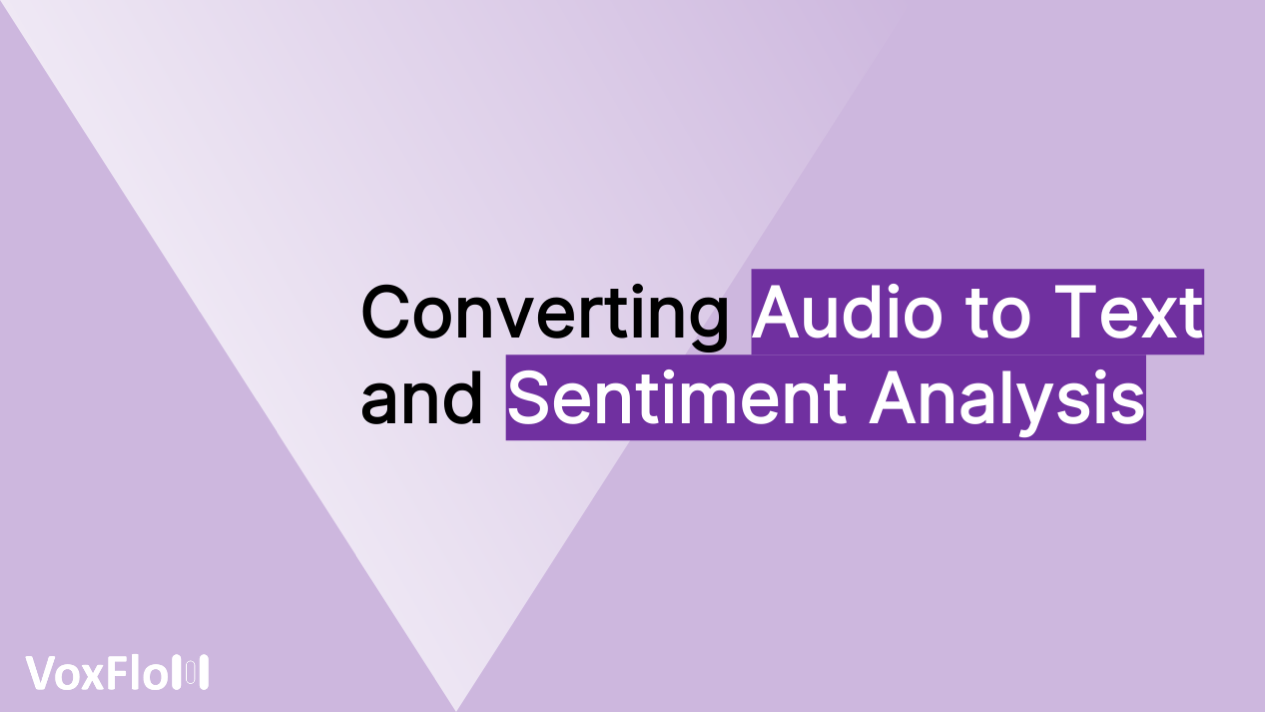Introduction to Audio-to-Text Conversion and Sentiment Analysis
In our digitally-driven world, the ability to convert spoken language into written text and analyze its sentiment is more crucial than ever. Whether it’s for transcribing podcasts, analyzing customer feedback, or even gauging public opinion on social media, these technologies are indispensable.
Exploring Audio-to-Text Conversion
What is audio-to-text conversion? Simply put, it’s the process of turning spoken words into written form. This involves technologies like speech recognition and machine learning.
But why is it important? For one, it saves time and resources in transcription. Plus, it opens doors for further text-based analysis, like sentiment analysis.
Deep Dive into Sentiment Analysis
Sentiment analysis, in essence, is about understanding emotions in text. It’s a subset of data analysis that extracts opinions, feelings, and attitudes from written language. This is particularly useful in customer service, market research, and social media monitoring.
Integration of Audio-to-Text and Sentiment Analysis
These technologies are like two sides of the same coin. First, audio-to-text transforms spoken words into text. Then, sentiment analysis interprets the emotions within that text. This combination is powerful in understanding customer sentiments, political opinions, and more.
Step-by-Step Guide to Converting Audio to Text
To get started, choose the right tool. There are many software options available, each with its unique features. Follow best practices like using clear audio and avoiding background noise for effective conversion.
Analyzing Text for Sentiments
Once you have your text, it’s time for sentiment analysis. Tools like IBM Watson, Sentiment Analyzer, and others come into play here. These tools can help you understand whether the sentiment is positive, negative, or neutral.
Challenges and Limitations
It’s not always smooth sailing. Challenges like accents, slang, and ambiguous language can affect accuracy. Additionally, sentiment analysis can sometimes misinterpret sarcasm or context.
Future Trends in Audio-to-Text and Sentiment Analysis
We’re looking at exciting times ahead. Advancements in AI and machine learning are
constantly improving these technologies. Expect more accuracy, faster processing, and even the ability to detect emotions beyond just positive and negative sentiments.
Case Studies
Real-world examples abound. From media companies using these tools for quick transcriptions to businesses analyzing customer calls for improved service, the applications are vast.
Practical Tips for Users
If you’re just starting out, focus on selecting the right tools and understanding their features. Practice makes perfect, so experiment with different types of audio and texts.
Ethical Considerations
With great power comes great responsibility. It’s crucial to respect privacy and handle data ethically, especially when dealing with sensitive information.
Cost Implications
Costs can vary based on the tools and scale of use. While some basic tools are free, more advanced features might require a subscription or purchase.
Conclusion
Audio-to-text conversion and sentiment analysis are transformative technologies reshaping how we interact with digital content. As they evolve, they offer immense potential for businesses, researchers, and individuals alike.
FAQs
- What is the best software for audio-to-text conversion?
- It depends on your specific needs, but popular choices include Google Speech-to-Text, IBM Watson, and Otter.ai.
- Can sentiment analysis be used for languages other than English?
- Yes, many tools offer multilingual support, though the accuracy can vary depending on the language.
- How accurate is audio-to-text conversion?
- Accuracy can be as high as 95% with clear audio and proper settings, though it varies with accents and background noise.
- Is sentiment analysis reliable?
- Generally, yes, but it can struggle with nuances like sarcasm or mixed emotions.
- Are there any free tools available for beginners?
- Yes, there are several free tools available for both audio-to-text conversion and sentiment analysis, though they may have limited features.

